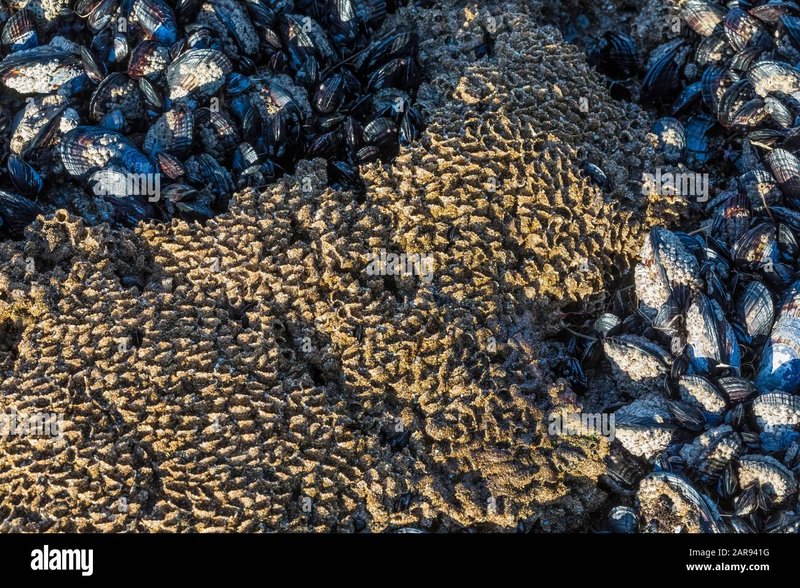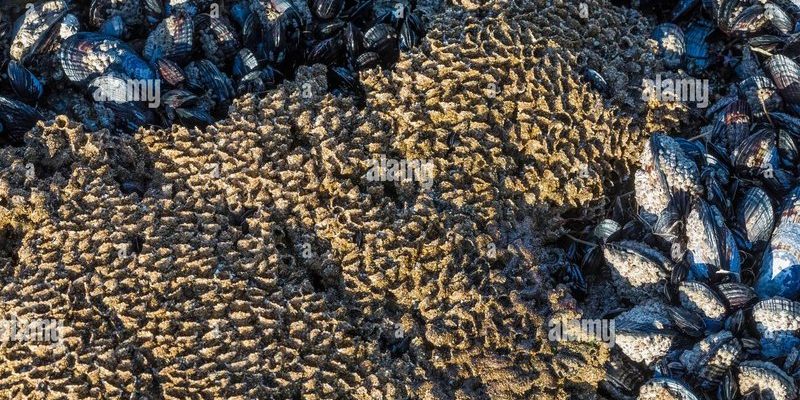
Bootlace worms are slender, elongated creatures that can stretch out up to 30 meters long—yeah, that’s a pretty wild party trick! These worms mostly belong to the *Lineus* genus and are often found in shallow waters. On the other hand, mussels are bivalve mollusks that live in colonies, forming beds that provide homes for various marine life. Each species has its story, but together, they create a fascinating interaction that benefits the surrounding ecosystem. So, how exactly do these squiggly worms and sturdy shells coexist? Let’s dig a little deeper.
What Are Bootlace Worms?
Bootlace worms are quite the marvel of nature. These worms, often found in the waters of the North Atlantic, can be incredibly long—some species spark interest due to their length alone. Their bodies are soft and segmented, making them flexible enough to navigate through tide pools and sandy sea beds.
You might be wondering what they eat. Bootlace worms mainly feed on small marine organisms, like plankton and detritus. They essentially scavenge the ocean floor, cleaning up debris and recycling nutrients. This cleaning process is crucial for maintaining the health of marine ecosystems. Without them, the ocean could quickly become a cluttered mess.
Another interesting aspect is their reproduction. Bootlace worms can reproduce asexually by fragmentation, meaning if one portion of the worm is severed, it can grow into a whole new worm. This ability to regenerate is a fascinating survival tactic. Talk about resilience!
Understanding Mussel Beds
Now let’s talk about mussel beds. Picture a community of tiny, hard-shelled creatures clustered together, clinging to rocks and other surfaces. Mussels are bivalves, meaning they have two shells that protect their soft bodies inside. Many species of mussels are found worldwide, but you’ll often find them in intertidal zones and shallow waters.
Mussel beds are more than just a collection of shells; they serve as habitats for various marine life. By forming dense colonies, they create a stable environment for other creatures like crabs, snails, and even small fish. More than that, these beds help stabilize the seafloor and can even protect coastlines from erosion.
Mussels are filter feeders, meaning they help keep the water clean. They pull water through their gills, filtering out plankton and particles. This not only provides food for themselves but also cleans the water, making it a healthier environment for all types of marine life. Honestly, mussels are like natural water purifiers!
How Bootlace Worms and Mussel Beds Interact
So, how do bootlace worms and mussel beds cohabit? Their interaction is a fascinating dance of mutual benefit. Bootlace worms often find shelter in mussel beds. The clusters of mussels provide a safe haven for the worms, protecting them from predators. When a bootlace worm curls up among these bivalves, it can safely hunt for food without worrying too much about becoming someone else’s meal.
Conversely, the presence of bootlace worms can benefit mussel beds. When the worms move around, they help aerate the sediment, which encourages nutrient flow to the mussels. This relationship is an excellent example of how species can coexist and support each other in their quests for survival.
But it’s not all sunshine and rainbows. Excessive populations of bootlace worms can sometimes outcompete young mussels for food. That’s where the balance comes in. The ocean constantly seeks equilibrium, and both species play their roles in maintaining it.
The Role of Bootlace Worms in Ecosystem Health
Bootlace worms contribute positively to their environments. By scavenging on decaying material, they help break it down and recycle nutrients back into the ecosystem. This process is essential for the health of various marine habitats, including mussel beds.
Furthermore, when bootlace worms thrive, they serve as food for larger predators, which can help maintain the balance in the food chain. Birds, fish, and even larger marine mammals will often feast on these worms, ensuring that energy and nutrients flow through the ecosystem.
You might be surprised to learn that healthy bootlace worm populations can also indicate a balanced ecosystem. So, if you see them thriving, it’s a sign that the environment is doing well overall.
The Impact of Environmental Changes
Changes in water temperature, pollution, and habitat destruction can disrupt the delicate relationship between bootlace worms and mussel beds. For instance, a rise in water temperature can affect mussel populations, as they are sensitive to heat. If mussels die off, bootlace worms lose their habitat, creating a chain reaction that could impact the entire ecosystem.
Pollution can also pose a significant threat. Contaminants in the water can disrupt the food supply for both species. If the plankton that bootlace worms and mussels depend on are diminished, it can lead to food shortages for both.
This situation emphasizes the importance of protecting marine environments. It’s crucial to keep our oceans clean and healthy to maintain the balance of interactions like those between bootlace worms and mussel beds.
Conservation and Future Considerations
With all this in mind, it’s clear that understanding the relationship between bootlace worms and mussel beds can help us appreciate the complexity of marine ecosystems. Conservation efforts are vital in protecting these creatures and their habitats.
Protecting coastal areas, implementing pollution controls, and promoting sustainable fishing practices can help maintain healthy populations of both mussels and bootlace worms. By raising awareness, we can contribute to the health of these underwater communities.
It’s kind of like being a part of a team; every player matters! So, the next time you think about the ocean, remember this fascinating duo and the role they play in our broader ecosystem.
In conclusion, bootlace worms and mussel beds may not be the stars of the show in our oceans, but their interaction is a critical part of marine health. By understanding how they coexist, we gain insight into the delicate balance of marine life, which is essential for fostering a sustainable future for our waters.

